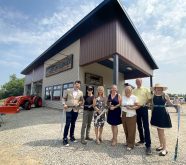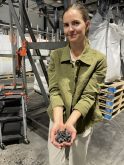A new online data dashboard launched by ONFARM allows the agriculture sector access to results from 25 trial sites across Ontario.
The On-Farm Applied Research and Monitoring (ONFARM) applied research initiative has the task of monitoring, and modelling priority sub-watersheds, establishing in-field paired trials identifying soil health indicators and testing the effectiveness of best management practices (BMPs). It’s been in existence since 2019.
Why it matters: The data dashboard allows farmers to measure how management practices could affect soil health.
Read Also

FCC partners with major Toronto innovation hub
A FCC parntership with MaRS Discovery District aims to solve technology problems in food supply chains.
Delivered through the Ontario Soil and Crop Improvement Association (OSCIA), the program fosters relationships with stakeholders and farmers to build a network of demonstration farms. As a result, everyone benefits from access to the program results. “The data set is building up to be a pretty massive thing, which will be fantastic for all of us to keep learning from, but can be challenging to share,” said James Cober, OSCIA program analyst.
OSCIA built a data visualization dashboard aggregating soil health data over several years and integrated it into its website. As a result, the public can access and explore the data most relevant to their farm conditions or relevant research.
Cober said a new tab underneath the OSCIA’s ONFARM heading would link a user to the data dashboard by selecting the “Exploring Soil Health Indicators” image.
From there, a user can peruse the information gathered from the 25 ONFARM sites comparing Best Management Practices (BMPs) from across southern Ontario that reflects the depth and breadth of the province’s farming operations, soil types and climatic variability.
“When you hover over the preview, it will say click to learn more,” said Cober. “It will launch you into a new tab.”
The baseline data was collected from SRT work in 2020 and included data on organic matter, Solvita CO2-Burst, the quantity of CO2 released from a rewetted dried soil sample, Solvita Labile Amino-Nitrogen, and active carbon.
The box plot presentation allows information to be added or removed via filter options reflecting aspects based on your farm’s operational practices to assess how other farms in the program compare.
“For those of you who want some more specifics, (you can) hover over any of (the box plots) which will bring up a list of its summary statistics,” he said.
Lower down the data set shows a graph of microbial community activity based on organic matter, and Solvita CO2-Burst amounts, said Cober.
“The graph indicates a positive correlation between the two with a lot of spread between points,” he said, reflecting the number of sites under different soils, management and other aspects affecting the relationship.
Using the focus mode, one can highlight a specific soil type, for example, sandy loam, and the graph will plot information relevant to that soil type.
“The page will change the axis numbering when you when you apply a filter,” Cober said. “So previously, we were looking at the organic matter axis going to around eight per cent, and now it’s dropped to around five, five and a half per cent. So be mindful of that if you’re using this tool to compare different sets of filter data.”
Zoom sliders are available on the scatter plots. By grabbing the “bubble” at the bottom corner, users can define their search criteria further.
For example, to highlight farms with a higher organic matter between six and seven per cent, to see what Solvita levels you could expect, said Cober, you could drag and drop the axis to that specific information.
Cober said this is the dashboard’s first edition, and he hopes there could soon be an iterative version showing multi-year data from 2021.
“We’ll be looking to do some breakdowns on the effects over many cover-crop and organic amendment treatments on all these sites with other soil parameters,” he said. “And potentially to evaluate the data through soil health assessment protocols.”














